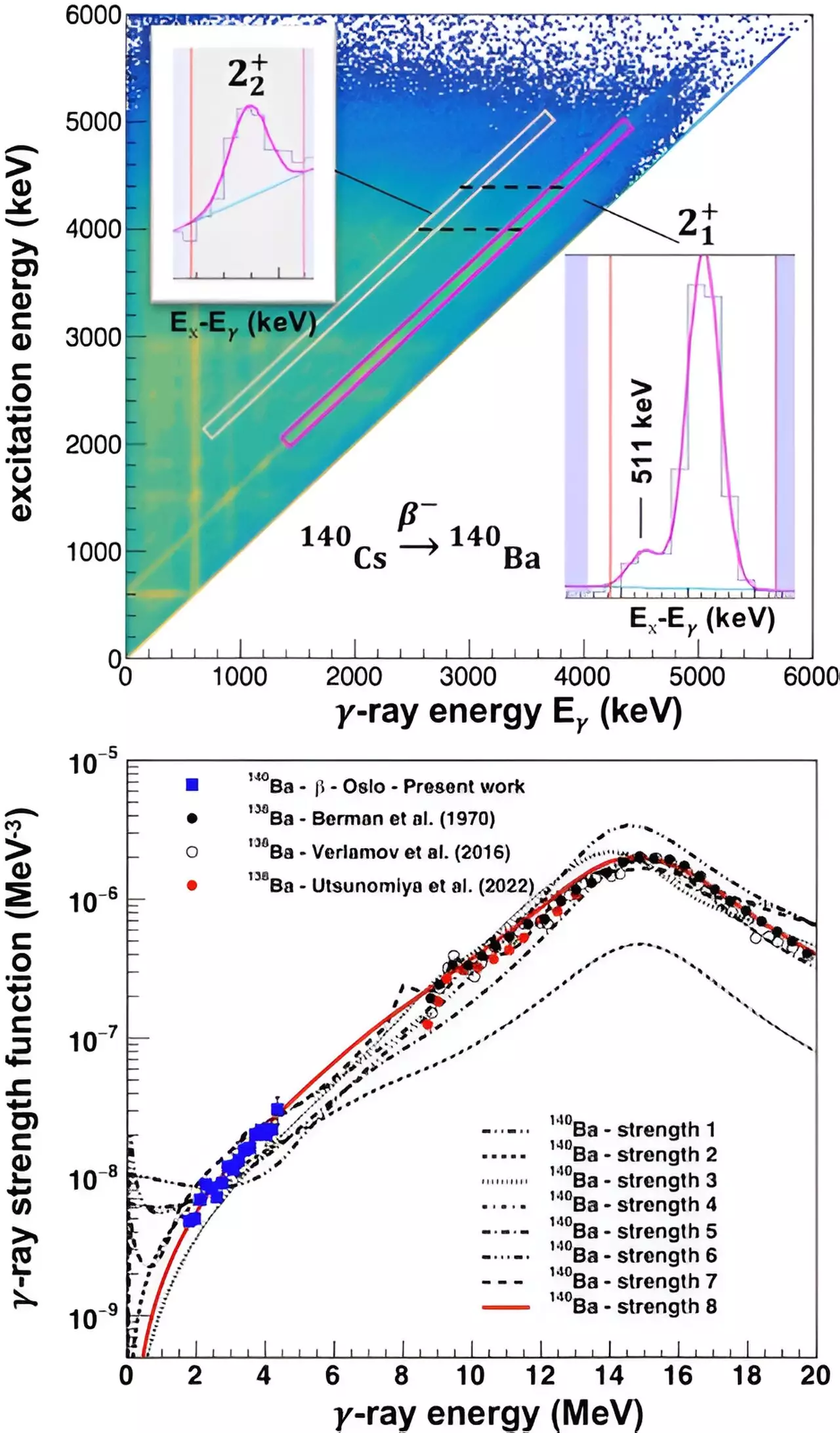The universe is a grand orchestra filled with the celestial music of stars, but the notes of their birth and death are shrouded in complexity. For millennia, humans have gazed at the night sky, pondering the origins of the luminous bodies that dominate our cosmos. How do stars ignite their nuclear fires, and how do they ultimately fade into oblivion? Additionally, how do they forge the diverse elements that form the building blocks of everything we know? Despite tremendous advancements in astrophysics, definitive answers remain elusive as scientists continue to dissect the intricate processes underlying stellar formation and annihilation.
Understanding these cosmic phenomena is essential to piecing together the evolutionary narrative of the universe. A recent breakthrough by an international team of researchers, including those from the U.S. Department of Energy’s Argonne National Laboratory, sheds new light on the formation of some of the heaviest elements in stars. Their findings, published in the esteemed journal Physical Review Letters, contribute a vital chapter to the ever-expanding book of cosmic history.
Central to the team’s investigation is a process known particularly for its unpredictability: neutron capture. Within stars, neutron-rich isotopes such as barium-139 capture neutrons during the nucleosynthesis process, which in turn enables the formation of heavier elements, including barium-140. Before their research, the rate at which this transformation occurs remained a substantial source of uncertainty, complicating models that predict the existence and abundances of various isotopes within stellar environments.
Led by Artemis Spyrou from Michigan State University, the team utilized CARIBU, a groundbreaking source of radioactive ions at Argonne’s Tandem Linac Accelerator System, to establish the first experimental constraints on the neutron-capture rate of barium-139. This development signifies a step forward in demystifying the synthesis of heavy elements in stars and emphasizes that the journey toward understanding is far from straightforward.
The process of nucleosynthesis, through which new atomic nuclei are synthesized, primarily falls into two categories: rapid (r-process) and slow (s-process). The r-process occurs during violent cosmic events, such as supernovae, where temperatures and densities reach astronomical heights. In contrast, the s-process unfolds over millions of years in the cores of aging stars, crafting elements through a more tempered mechanism.
However, recent astronomical observations have suggested a third pathway: the intermediate (i-process). In stars that appear poor in metals, unusual abundance patterns of certain elements indicated that the i-process might be pivotal in their nucleosynthesis. This proposal opens up new avenues for inquiry into the myriad ways elements are forged and supports the notion that our understanding of stellar chemistry is ripe for expansion.
The research team’s methodology illustrates a remarkable blend of innovation and collaboration. Employing sophisticated experimental techniques, they managed to measure the gamma rays emitted during the decay of cesium-140, which transitions into barium-140. This indirect approach marked a significant milestone in determining the neutron-capture rate of barium-139, elucidating the mechanisms of the i-process.
ATLAS director Guy Savard noted the importance of using high-intensity and high-purity radioactive beams to facilitate these measurements. The capabilities offered by CARIBU have proven essential, enabling scientists to explore neutron-rich isotopes and their corresponding processes more deeply.
The newly-acquired data is merely the tip of the iceberg. As researchers prepare for a large experimental campaign at the upgraded nuCARIBU facility, prospects for discovery loom large. Their goal is to further investigate neutron capture and its implications for neutron-rich isotopes in the i-process, ultimately seeking more direct observation of these stellar phenomena.
The excitement surrounding this research serves as a reminder that the quest for knowledge is ongoing. While we may have uncovered some secrets of stellar birth and death, the cosmos holds many more mysteries that require our attention, collaboration, and imagination.
The study of stellar processes transcends mere scientific curiosity; it taps into the very essence of who we are. The elements forged in the hearts of stars make possible the existence of planets, life itself, and our ability to reflect on the universe’s grand narrative. As we piece together the puzzles of stellar formation and death, we inch closer to understanding our origins, our place within this cosmic tapestry, and perhaps most importantly, the profound interconnectedness of all matter in the universe. Thus, the music of the stars continues to unfold, revealing deeper harmonies in the grand symphony of existence.

